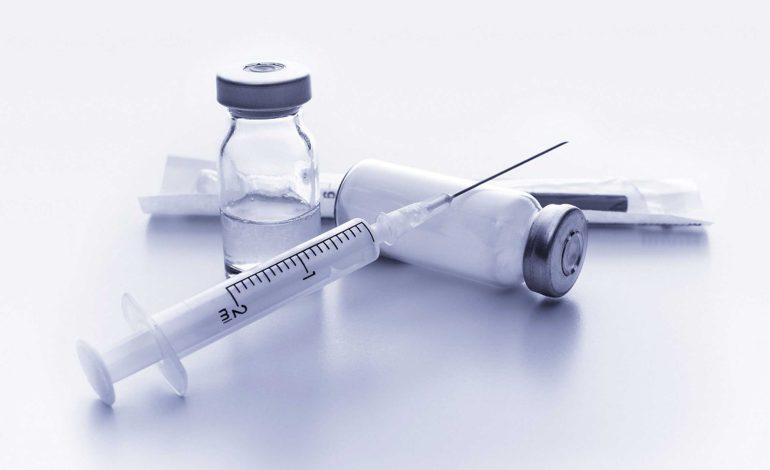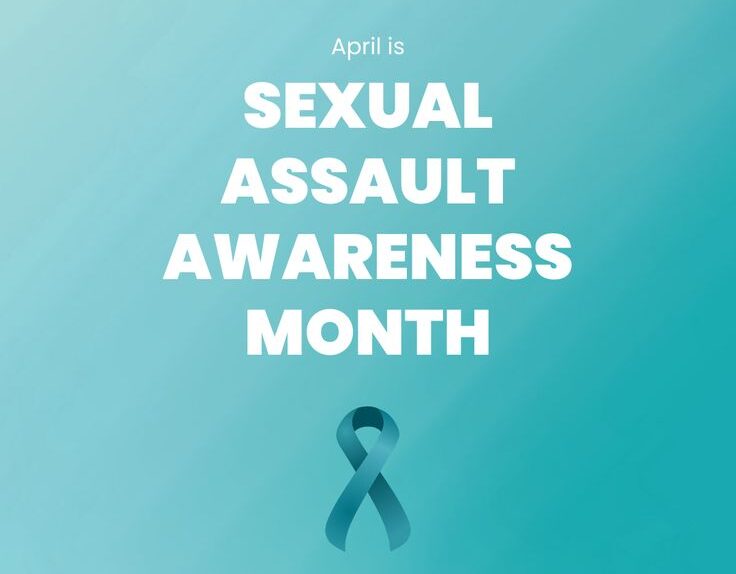Why all the hullabaloo about vaccinations? GET THE FACTS RIGHT
Whenever the government announces a vaccination drive, we get to hear dissenting voices from different quarters. It is thus understandable for wary parents who want to protect their children from


Whenever the government announces a vaccination drive, we get to hear dissenting voices from different quarters. It is thus understandable for wary parents who want to protect their children from any possible risk especially with so many conflicting rumours that abound. We explore the highly emotional vaccination debate. Take the journey with ESTHER AKELLO, ESTHER KIRAGU and LILY RONOH and find out the challenges facing the global vaccination drive and where Kenya sits in the grand scheme of things.
‘Mom arrested after allegedly kidnapping her own daughter to avoid vaccination…’
‘24 children paralysed in dispensary scandal…’
‘Measles cases in outbreak linked to Disney swell to 107…’
‘Boycott Polio vaccine, say Kenya’s Catholic Bishops…’
According to the United Nations Children’s Fund (UNICEF), immunisation has helped save three million lives worldwide and yet the above headlines have become the norm in recent times both in Kenya and globally. It is estimated that another 16 million deaths could be prevented annually if effective vaccines are used against all potentially vaccine-preventable diseases. In fact, the health body is so enthusiastic that it claims polio could be next in line, after small pox.But is it possible to rid the world of measles, polio and mumps by mass vaccination programmes? Or can vaccination cause more health problems than cures? These are questions in the minds of millions in the world even as world health body and other organisations make fervent efforts to rid the world of vaccine-preventable diseases.Two hundred years after the discovery of vaccine by the English physician Edward Jenner, diseases that the world believed to be on the brink of eradication due to rigorous vaccination exercises are surging back and they are not relenting. While the use of vaccines was initially thought to have brought to an end seven major diseases namely smallpox, diphtheria, tetanus, yellow fever, whooping cough, polio, and measles, so far only one disease, smallpox, has been eradicated with many governments struggling to contain measles and polio. In July this year, Nigeria, one of the only three countries in the world where polio is considered to be endemic (Afghanistan and Pakistan complete the triad), marked for the first time, a year without the disease. It will have to wait another year of having polio-free cases if it is to be declared polio free. While all these are glowing tributes to the world immunisation efforts, for the first time in 12 years, a woman died from measles related complications in the USA. Just seven months before, 173 people from various states had to be treated for measles in an outbreak traced back to the popular entertainment resort, Disney World in California.
So what went wrong?
According to reports, USA has experienced an upsurge of the disease in recent years with the latest being in December 2014. It was linked to unvaccinated children whose parents are anti-vaccination, commonly referred to as ‘anti-vaxxers’.
For years, the group was only a handful on the global radar but the movement gained traction when a research paper published in The Lancet by former British surgeon and medical researcher, Andrew Wakefield, in 1998 linked the MMR or mumps, measles and rubella vaccine to the neurodevelopment disease, autism. It further blew up when celebrity power couple Jim Carrey and now ex-wife, Jenny McCarthy became vocal claiming that vaccines could lead to autism after their son was diagonised with autism allegedly after receiving the MMR jab.
However, Wakefield, also referred to as the father of the anti-vaccination movement, was faulted for several errors including falsified data and conflict of interest after it emerged that he had received funds from a law firm that intended to sue vaccine-producing companies. His paper was eventually pulled down by The Lancet in February 2004, and termed as an ‘elaborate fraud’ by the British Medical Journal and Wakefield’s license revoked.
Unfortunately, the move is a decade too late and thanks to Wakefield’s research, the number of children receiving the vaccine in America and some European countries has steadily dwindled. Despite a new study published in the Journal of the American Medical Association in February this year, showing that the MMR vaccine and autism are not related, Wakefield has remained adamant that MMR contributes to the current global autism upsurge. Doctors are now on high alert urging frequent immunisation in a bid to create herd immunity, which occurs when most of the population has been vaccinated for an infectious disease, thereby providing some protection for people who are not vaccinated, as the disease has no point of entry. However, with decreased numbers of immunisation especially among children, herd immunity gets ‘eroded’ putting countries at risk.
Does Africa have an anti-vaccine movement?
The resounding answer is yes, though the motivation behind it is slightly different from that of the western world. In 2003, the Northern states of Nigeria imposed a ban on vaccinations saying they were a means of western powers to spread sterility and HIV/AIDS among Muslims. Despite the government proving the tests were safe, the reception was so hostile that in 2013, nine vaccinators were shot dead at health centres in the northern city of Kano. In July this year, the Kenyan Catholic Church came out strongly against the government and World Health Organization polio vaccination campaign, going as far as calling on the faithful to boycott the exercise saying the vaccine contained contaminants, specifically oestrogenic compounds. Oestrogen is naturally produced by the body but can be pharmaceutically manufactured and combined with progesterone, another hormone used to make birth control pills which prevent contraception by preventing the release of eggs by a woman, changing the womb environment so that an egg cannot develop or changing the cervix environment preventing the passage of sperm. The move to boycott the vaccine had government officials in firefighting mode and at pains to put the public at ease through several awareness campaigns. And if the call to boycott the vaccination drive sounds familiar, that is because it is. Just last year, the Catholic Church had called on Kenyan women to boycott the tetanus vaccine saying the vaccine contained contaminants that caused a woman’s body to destroy its own foetus with vaccine-induced antibodies, causing permanent infertility through spontaneous abortions. The Catholic Church added that their decision to fight the vaccine was informed by several lab tests and tetanus vaccine related events in Mexico and Nicaragua where tests revealed that the tetanus vaccine was laced with a chemical that caused women to suffer from spontaneous abortion.
Addressing the myths and controversies
According to Dr Ephantus Maree, Head of unit, Vaccine and Immunisation Services in Kenya, the government made a deliberate move to make essential vaccines for children aged between zero to nine months routine (to be given at a specific age) in 1980 thereby streamlining and formalising six vaccines under the term KEPI- Kenya Expanded Programme on Immunisation. In recent times, the number has risen to 11 and includes measles, polio, and TB with rotavirus being the latest entrant to the government schedule. He adds that before any vaccine is introduced in the country, there must be adequate data to support the need for the vaccine. This is through a rigorous research done by the Kenya National Immunisation Technical Advisory Group (KENITAG), an independent body, which comprises of a team of academicians and researchers, who give their research findings and recommendation regarding the same to the government.
Dr Ephantus Maree, Head of unit, Vaccine and Immunisation Services, Kenya
Kenya had enjoyed the polio free status since 1984 when the last case was reported, however, the government was forced to start vaccination campaigns when a case emerged in 2006.The case was attributed to cross border movement along the porous North Eastern Kenya border after two cases were reported in Garissa County. In 2009, 19 cases were reported in Turkana County and another in Migori County while a 2013 report showed 14 cases in Garissa County, out of which two adults died. The government has employed several strategies to curb the spread of polio including, routine vaccinations, rapid results campaigns like the ones scheduled last month and vaccinations in schools. Additionally, the government is working in conjunction with campaign ambassadors with the most vocal being Mr Harold Kipchumba, former nominated senator representing people with disability.
Kipchumba 54, and walking with the help of crutches, was born with normal use of all his limbs. All he remembers is at the age of four while in his home back yard in Kaptiony village, North Baringo, his eyes became constantly watery and he suffered a runny nose while his speech became difficult. His limbs also became numb. Since no one understood what was happening, the last thing in his parents’ minds was a visit to a health centre. Meanwhile, the villagers attributed his deteriorating health to witchcraft. His father then abandoned the family and shortly thereafter his mother dumped him at a mission hospital where the missionaries came to his aid. Though no longer bitter with his parents, he reminisces about his life before polio and the limitations that came afterwards, as an entry point to convince parents to take their children for vaccination.
He was among those unimpressed by the Catholic Church’s call to boycott the exercise.“With the influx of refugees from neighbouring countries, we are always at risk of an outbreak. More campaigns and strengthening the culture of attending routine immunisation programmes should be emphasised to ensure Kenya and Africa is declared polio free. Alarmist allegations, however, only serve to regress that goal,” he says.
According to Dr Maree, the situation is so serious that even a single case of the disease is considered an outbreak. This is because once the infection reaches an unvaccinated population, controlling the spread of the disease, whose incubation period is a mere three to six days with paralysis setting in anywhere between seven to 21 days, could spell disaster not just health-wise but economically and long term, hence the need to enhance herd immunity through repeated vaccinations. According to experts, the more the doses, the stronger the child hence the need for parents to take the children for booster shots repeatedly, regardless of whether the child has received their routine vaccination or not.
“Whenever we vaccinate the population, we estimate 80 per cent develop immunisation and 20 per cent don’t. Therefore, by giving several polio rounds or campaign then we are able to get the 20 per cent who didn’t develop immunisation in the previous round/ campaign,” adds Dr Maree. So far, Kenya seems to be getting a grip on the disease as according to the Ministry of Health statistics, the last case was reported in 2013. However, things could be better.
The latest report by the Kenya Demographic and Health Survey, showed that 2014 was the year with the lowest coverage of scheduled vaccinations, with coverage at 81 per cent prompting massive campaigns in 2015 targeting six million children in 32 of the most affected counties in the country. And just to ensure that the target is attained, following attempts by several demographics influenced by religious beliefs to try and hide or block children from being immunised, the government has put legal frameworks where parents can be arrested and charged in a court of law. Following publicised tests by the government that showed the polio vaccine did not contain the contaminants as claimed by the Catholic Church, the church relented on its stand and asked its faithful to go for the vaccine, adding the government should be transparent when dealing with delicate health issues, despite the government agreeing multiple times to conduct joint testing with stakeholders. However, if media reports are anything to go by, the damage had already been done as several mothers stuck to the church’s clarion call to boycott the vaccination. A spontaneous social media survey in some parenting, pregnancy and birth groups by Parents magazine posing the question to vaccinate or not to vaccinate children, revealed telling results of changing and influencing trends including, anxiety over repeat booster shots such as those for polio and tetanus and unscheduled vaccines in the government roster. Other women flat out confessed to having given up on the immunisation exercise following “bad experiences” such as children becoming severely ill with the same disease immediately after vaccination.
Dr Maree attributes the different opinions to misinformation and ignorance surrounding how vaccinations are conducted saying many parents have no idea that they have a recourse measure. “Most vaccines are mild but in rare occasions, they can have adverse effects. Any parent whose child shows an adverse effect to any type of vaccine can seek action. The parent should report to the hospital they received the vaccine from which will then report to the Ministry of Health, which has a body mandated to investigate and handle such matters in conjunction with the country’s Pharmacy and Poisons Board,” he says.
If parents had any fears following the Catholic Church claims concerning the polio vaccine, then the July 16, 2015 media reports indicating that 24 children had become paralysed in Busia County after receiving anti-malaria injections must have cemented it. It did not help that a few weeks later, one of Kenya’s gospel power couple producer J blessing and singer/ actress Chantelle lost their six-month-old baby, allegedly after receiving a flu jab. While initially there was hue and cry in the case of the 24 children that the vaccinations had expired, it later emerged that the drug had been administered incorrectly through a wrong nerve hence the temporary paralysis. With intervention from physiotherapists from The Nairobi Hospital, the children regained full use of their limbs, except one whom doctors are optimistic will regain a normal life with subsequent therapy.
Former Senator and Unicef anti-polio goodwill Ambassador Harold Kipchumba
“Before vaccines are introduced to the mass public, they undergo a rigorous vetting process where they are pre-qualified by World Health Organisation (WHO), the manufacturer, as well as the Kenyan government quality control laboratories after which they are distributed free of charge by the government to all hospitals and medical facilities including those privately-owned,” says Dr. Maree who also adds, “With growing affluence, some families prefer to get vaccines that are not in the government schedule such as chicken pox which can be obtained in some private hospitals. While this is not wrong, it is worth noting that the government scheduled vaccines are those, which are deemed essential, and that one cannot do without in life.”
According to Ministry of Health officials, despite a poor start hampered by the contamination claims, they managed to reach their target of immunising six million children. The Catholic Church also emphasised that they were not an anti-vaccination group and even called on parents to take their children for routine vaccinations for other diseases.
Other vaccines…
Last year, the government introduced the tetanus vaccine following statistics showing Kenya is among 19 countries worldwide, and one of the only two in East and Central Africa, endemic to tetanus. In a bid to have long-term effects, the government opted to immunise expectant mothers instead of children as the mothers can pass on the immunity to their unborn children. Some vaccines, though essential, can be very expensive. The vaccines are termed as new and underutilised vaccines because the government procures them in conjunction with the Global Alliance for Vaccines and Immunisations (GAVI). They include rotavirus, pneumococcal and whooping cough, hepatitis B and haemophilus influenza vaccine, which prevents against infections such as meningitis, pneumonia and otitis. In May 14, 2013, Kenya became the first country in sub-Saharan Africa to protect girls against cervical cancer with GAVI supported HPV (Human Papilonion Virus) vaccine. The first rollout targeting 20,000 girls took place in Kitui County where further tests are still underway. According to WHO, a woman dies from cervical cancer every two minutes. Of the 275,000 reported cases of cervical cancer, more than 85 per cent live in developing countries where access to screening and treatmentis often limited. In Kenya alone, every year, more than half of the 2,500 women diagnosed with cervical cancer die from the preventable disease. The government hopes to rollout the vaccine countrywide using the school system strategy once the modifications are approved.
KENITAG is also currently researching and working on a flu vaccine and based on their findings, they will advice the government whether to take up the same. By the end of 2015, the government is planning to introduce a new vaccine, measles and rubella or MR in short. Currently, the government is only administering the measles vaccine. The polio vaccine being administered currently is oral and plans are underway to introduce an injectable polio vaccine by October this year, which is expected to reduce any side effects that the oral vaccine might have. It is prudent to note that this does not mean that the oral vaccine will be wiped out, rather, both the injectable and oral polio vaccines will complement each other and will be given at different times. Kenya is operating in line with the Global Vaccine Action Plan (GVAP) endorsed by the 194 member states of the World Health Assembly in May 2012, which aims to set up a framework allowing the prevention of millions of deaths by 2020 through more equitable access to existing vaccines for people in all communities.
“Immunisation is the most cost-effective public health intervention. It costs so little to immunise a child or adult but once you miss the opportunity, addressing the consequences becomes a very expensive affair,” concludes Dr Maree.





